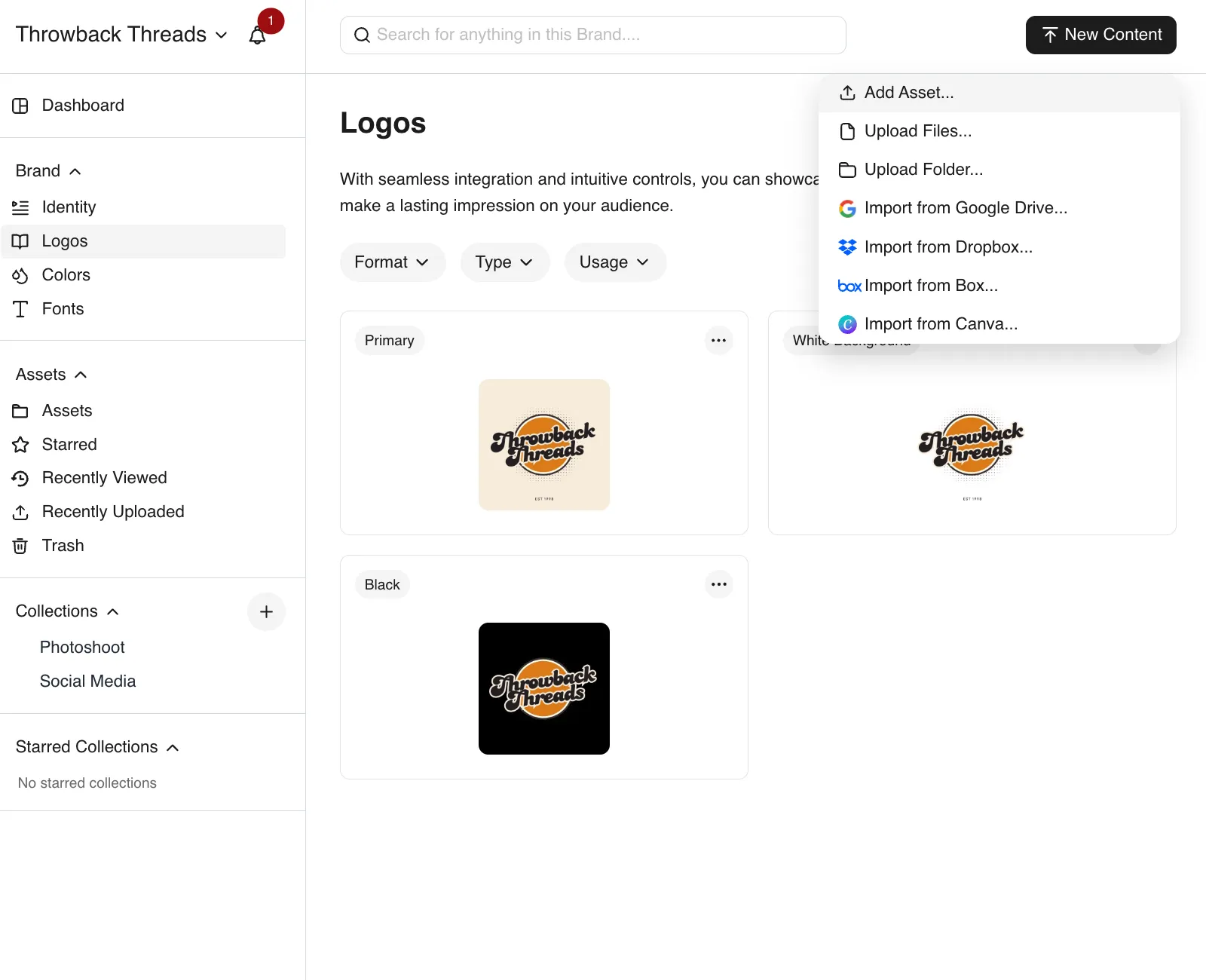
Key Takeaways
1. Understanding Creative Search: The article emphasizes the importance of creative search in agencies, where time spent finding the right creative assets can significantly impact productivity.
2. Data-Driven Approach: Agencies that leverage data analytics and insights can streamline their creative search processes, leading to better decision-making and reduced time spent on searches.
3. Collaboration Tools: Implementing collaborative tools and platforms helps teams work more efficiently, allowing for easier sharing and access to creative assets.
4. Automation: Utilizing automation technologies can significantly decrease the manual effort required in the creative search process, helping agencies save valuable time.
5. Regular Training and Development: Continuous training for teams on the latest tools and techniques in creative search can keep them updated and enhance their efficiency.
One of the most significant challenges brands face is the time spent on creative searches. Whether it's finding the right assets, content, or inspiration, lengthy search processes can drain resources and hinder productivity. In this blog post, we explore how brands have successfully reduced their creative search time by 40% through effective strategies and tools, ultimately enhancing their productivity.
Agencies must find ways to optimize their processes and deliver exceptional results without sacrificing quality. One of the most significant areas where agencies can improve efficiency is in the creative search process. Creative search, the process of finding and selecting the right creative assets for projects, can often be time-consuming and cumbersome.
The Challenge of Creative Search
Creative search refers to the methods and processes used by agencies to locate, evaluate, and select creative assets such as images, videos, graphics, and other content. Traditionally, this process involved manual searches through extensive databases, often resulting in frustration and wasted time. Agencies would rely on keyword searches, folder hierarchies, and personal knowledge of available assets, leading to inefficiencies and missed opportunities.
The limitations of traditional creative search methods are evident. A lack of centralized repositories, inconsistent tagging of assets, and the sheer volume of available content can result in lengthy search times. As agencies grapple with these challenges, the need for a more streamlined approach becomes increasingly clear.
The Importance of Data in Creative Search
Data provides insights that can significantly enhance decision-making and streamline workflows. By analyzing past projects, agencies can identify which assets performed well and which did not, allowing them to make informed choices in the future.
For example, performance metrics such as engagement rates, conversion rates, and audience demographics can inform creative decisions. By understanding what resonates with their audience, agencies can focus their creative searches on assets that are more likely to yield positive results. This data-driven approach not only saves time but also increases the likelihood of project success.
Moreover, integrating data analytics into creative search processes allows agencies to predict trends and adapt their strategies accordingly. By staying ahead of the curve, agencies can ensure that their creative solutions are relevant and impactful.
Implementing Collaboration Tools
With teams often working remotely or across different locations, effective communication and asset sharing become paramount. Tools like Slack, Trello, Asana, and BrandLife facilitate seamless collaboration and organization.
These platforms enable team members to share creative assets quickly and efficiently, reducing the time spent searching for files. For instance, using a project management tool can help teams keep track of assets associated with specific projects, ensuring that everyone has access to the latest versions and reducing redundancy.
Additionally, collaboration tools often come with features that allow for real-time feedback and updates. This immediate communication helps teams stay aligned and reduces the likelihood of miscommunication, ultimately leading to faster decision-making.

Strategy Implementation: A BrandLife Case Study
Background
In our BrandLife case study, we examine a mid-sized marketing agency that faced significant challenges with creative search efficiency. The agency's creative team reported spending an average of 15 hours a week searching for assets, which was impacting project timelines and overall team morale.
Strategies Implemented
To tackle this issue, the agency implemented several time reduction strategies, including:
1. Centralized Digital Asset Management (DAM):
The agency invested in a robust DAM system that allowed for easy organization and retrieval of assets. This system enabled the creative team to categorize and tag assets effectively, reducing the time spent searching.
2. Search Optimization Techniques:
The team trained staff on search optimization techniques, including the use of keywords, filters, and advanced search functions within the DAM. This training empowered team members to find the assets they needed quickly and efficiently.
3. Regular Asset Audits:
Conducting quarterly audits of digital assets ensured that outdated or irrelevant materials were removed, making searches more straightforward and efficient.
4. Collaboration and Feedback Loops:
Encouraging collaboration among team members fostered a culture of sharing and feedback, allowing individuals to recommend valuable assets to one another.
Results
After implementing these strategies, the agency saw a remarkable 40% reduction in creative search time. Here are some key metrics:
Before Implementation:
Average search time for assets was 15 hours/week.
After Implementation:
Average search time for assets decreased to 9 hours/week.
- Employee Satisfaction:
Team members reported a 30% increase in job satisfaction due to reduced search frustrations.
- Project Timelines:
The overall project completion time improved by 25%, allowing the agency to take on more clients and increase revenue.
User Testimonials
"The training on search optimization has been invaluable. I feel much more confident in finding what I need quickly." - Graphic Designer
Download the Full Case Study PDF
For a more in-depth look at the strategies implemented and the results achieved, download our comprehensive PDF case study. This document includes detailed analytics, percentages, and user testimonials that showcase the effectiveness of these time reduction strategies in maximizing creative search efficiency.
[Download the Full Case Study Here]
Maximizing creative search efficiency is essential for brands looking to enhance productivity and maintain a competitive edge. By implementing strategic changes and investing in the right tools, brands can significantly reduce search times, leading to improved project timelines and employee satisfaction.
If your brand is struggling with creative search efficiency, consider adopting some of the strategies discussed in this post. The potential for increased productivity and improved outcomes is well worth the investment.
---
PDF Download: BrandLife Case Study
The PDF document will provide a thorough analysis of the strategies implemented to achieve a 40% reduction in creative search time. It includes:
- Detailed analytics and metrics.
- Before-and-after comparisons.
- User testimonials from team members affected by the changes.
- Best practices for implementing similar strategies in your organization.
[Download the PDF Case Study]
By focusing on search optimization and productivity, your brand can achieve similar success, streamlining creative processes and enhancing overall efficiency.
Frequently Asked Questions
Consistent brand management builds trust by delivering reliable experiences and clear messaging, reducing customer uncertainty. This trust fosters loyalty, encourages repeat business, and turns customers into advocates who promote your brand organically.
Brand management tools ensure consistent messaging across regions while enabling cultural localization. They centralize assets, streamline approvals, and maintain global brand coherence while respecting local market preferences.
Brand asset management centralizes all creative assets, making them easily accessible. Besides, built-in collaboration tools like version control, commenting, and permissions help teams share feedback, reduce miscommunication, and speed up project approvals.
A strong brand strategy ensures consistent messaging, visuals, and values across all touchpoints, creating a seamless and trustworthy customer experience. When customers repeatedly encounter a reliable and aligned brand, it leads to higher satisfaction, loyalty, and long-term advocacy.
Common challenges include employee resistance, system integration issues, poor user adoption, data quality problems, high costs, inadequate training, and inconsistent implementation across departments and global locations.





